Career development is crucial to maintaining a motivated and skilled workforce. For many employees, aligning their professional goals with their daily work can be a game-changer, increasing job satisfaction and productivity. One effective way to achieve this alignment is through personalized learning paths. Unlike traditional one-size-fits-all training programs, customized learning paths tailor learning experiences to each employee’s strengths, needs, and career aspirations.
Understanding Personalized Learning Paths
At its core, a personalized learning path is a customized roadmap for an employee’s professional growth. It outlines specific learning activities, resources, and milestones tailored to their career planning. This approach ensures that each employee receives the training and development opportunities most relevant to their role and future aspirations.
Traditional learning paths often involve standardized training programs that all employees must complete, regardless of their current skills or career goals. While these programs can provide a baseline of knowledge, they may not address the specific needs or interests of each individual.
In contrast, personalized learning paths are dynamic and adaptable. They are designed to evolve with the employee, adjusting to new professional goals and changes in their career development.
Benefits of Personalized Learning Paths
Personalized learning paths offer a range of benefits within your organization. By tailoring learning experiences to individual needs and goals, these paths can boost engagement, productivity, and retention.
Enhanced Employee Engagement and Motivation
Personalized learning paths can lead to higher levels of employee engagement and motivation. When learning experiences align with employees’ career goals and professional aspirations, they are more likely to be invested in their development. This personalized approach makes employees feel valued and understood, leading to increased enthusiasm for ongoing professional development.
Increased Skill Acquisition and Productivity
Tailored learning paths focus on each employee’s skills and competencies to succeed. This targeted approach ensures that employees receive relevant training, which they can apply to their daily tasks. As a result, employees become more proficient in their roles, increasing productivity and efficiency. Moreover, continuous skill acquisition keeps employees up-to-date with industry trends and best practices, enhancing their overall performance.
Improved Retention Rates and Job Satisfaction
Employees who feel supported in their career development are more likely to stay with their organization. Personalized learning paths show that the company is invested in its long-term success, which can lead to improved job satisfaction and loyalty. Employees who see a clear path for growth and advancement are less likely to seek opportunities elsewhere, reducing turnover rates.
Alignment with Organizational Goals and Needs
Personalized learning paths can also align employee development with organizational goals. By focusing on the skills and knowledge that are most valuable to the company, these paths ensure that employees are equipped to meet current and future business challenges. This alignment supports strategic career planning and helps create a workforce that drives the company’s success.
Support for Leadership Development Programs
Leadership development programs benefit significantly from personalized learning paths. Future leaders can receive training tailored to their specific strengths and areas for improvement, preparing them more effectively for leadership roles. This targeted development ensures emerging leaders possess the necessary skills and knowledge to guide their teams and contribute to the organization’s growth.
Facilitation of Career Planning
Personalized learning paths play a critical role in career planning. They provide a clear roadmap for employees to follow, outlining the steps needed to achieve their professional goals. They help employees understand what is required for their career advancement and motivate them to take proactive steps toward their development.
Assessing Employee Strengths, Needs, and Career Aspirations
To create effective personalized learning paths, you must first understand your employees’ strengths, needs, and career aspirations. This assessment forms the foundation of any career development strategy, ensuring that learning experiences are tailored to each individual.
Conducting Skills Assessments and Performance Reviews
Start with a comprehensive skills assessment. These assessments help identify the current competencies of each employee, highlighting their strengths and areas for improvement. Performance reviews also provide valuable insights into how employees perform in their roles. Regular evaluations allow you to track progress and adjust learning paths accordingly.
Using Self-Assessment Tools and Feedback Mechanisms
Encourage employees to participate in self-assessment exercises. Self-assessments empower employees to reflect on their skills, professional goals, and career aspirations. This self-reflection can reveal insights that might not be apparent in traditional evaluations. Additionally, gather feedback from peers and supervisors to get a well-rounded view of each employee’s abilities and potential.
Setting Up One-on-One Meetings for In-Depth Career Discussions
One-on-one meetings are essential for understanding employees’ career goals and aspirations. These discussions allow employees to share their professional ambitions and personal interests. Use these meetings to explore their long-term career planning and immediate learning needs. This personalized approach ensures that the learning paths you create are aligned with their career development objectives.
Identifying Professional Goals
Clarifying professional goals is a crucial step in the assessment process. Whether an employee is aiming for a leadership development program or looking to enhance specific skills, understanding their goals helps tailor the learning experience. Aligning learning activities with these goals can create a more relevant and motivating development plan.
Aligning Assessments with Organizational Needs
While focusing on individual strengths and aspirations is essential, you must also consider the organization’s needs. Aligning employee development with business objectives ensures that learning paths contribute to the company’s success. This alignment supports strategic career planning, ensuring that employees develop skills that are valuable to the organization.

Designing Tailored Learning and Career Development Plans
Designing tailored learning and development plans is critical to effective career development. These personalized plans help employees achieve their career goals by focusing on their unique strengths and aspirations.
Identifying Key Competencies and Skills
Identify the key competencies and skills necessary for each employee’s role and future career aspirations. This involves examining their current skills and determining which ones they need to develop to advance in their careers. Tailoring learning plans to these specific competencies ensures that employees receive relevant and impactful training.
Creating Individualized Learning Objectives and Milestones
Set clear, individualized learning objectives and milestones for each employee. These objectives should be specific, measurable, achievable, relevant, and time-bound (SMART). By breaking down career goals into smaller, manageable steps, employees can see their progress and stay motivated throughout their professional development.
Selecting Appropriate Learning Resources and Methods
Choose the right mix of learning resources and methods to support each employee’s development. This can include online courses, workshops, mentoring programs, and on-the-job training. Consider the employee’s learning style and preferences to maximize engagement and effectiveness. For those in a leadership development program, incorporating hands-on leadership experiences and mentorship can be particularly beneficial.
Balancing Short-Term and Long-Term Career Goals
Ensure that learning plans balance short-term skill acquisition with long-term career planning. Short-term goals include mastering a new software tool or improving communication skills. In contrast, long-term goals could focus on career advancement or transitioning to a leadership role. This balanced approach keeps employees engaged and aligned with their professional goals.
Considering the WHY.os for Career Development
Incorporate the WHY.os framework into the design of learning and development plans. Understanding an employee’s WHY (their purpose), HOW (the way they bring their WHY to life), and WHAT (the outcome they deliver) can elevate the personalization of their development plan. By aligning the learning path with the employee’s core motivations and values, you can create a more meaningful and impactful career development experience. This clarity helps employees confidently articulate who they are and what they bring to the world, enhancing personal and professional growth.
Implementing Personalized Learning Paths
Once you’ve designed tailored learning and development plans, the next step is to implement them effectively. Proper implementation ensures that these personalized learning paths translate into actual career development and ongoing professional growth for your employees.
Developing a Structured Plan and Timeline for Career Development
Create a structured plan and timeline for each employee’s learning activities. This plan should outline the steps they need to take, the resources they’ll use, and the milestones they should aim to achieve. A clear timeline helps keep employees and managers accountable, ensuring that learning goals are on schedule.
Integrating Learning Opportunities into Daily Work
Make learning a part of everyday work. Encourage employees to apply new skills and knowledge to their tasks and projects. This practical application reinforces learning and makes it more relevant. For example, if an employee works on a leadership development program, give them opportunities to lead meetings or manage small projects. This hands-on experience is invaluable for career development.
Providing Continuous Support and Resources
Continuous support is essential for the success of personalized learning paths. Managers should regularly check in with employees to discuss progress, address challenges, and adjust learning plans. Providing access to various learning resources—such as online courses, workshops, and mentorship programs—ensures employees have the tools they need to succeed.
Encouraging Peer Learning and Collaboration
Promote a culture of peer learning and collaboration. Encourage employees to share their knowledge and experiences with their colleagues. This not only enhances learning but also fosters a supportive work environment. Group projects, team workshops, and peer mentoring can be effective ways to implement this approach.
Regular Feedback and Adjustments
Regular feedback is crucial for continuous improvement. Schedule periodic reviews to assess how well the learning paths work and make necessary adjustments. Solicit input from employees about what’s working and what’s not. This iterative process ensures that the learning paths remain relevant and effective in helping employees achieve their career goals and professional aspirations.
Monitoring and Measuring Success
Track the progress and success of the learning paths through measurable outcomes. Use key performance indicators (KPIs) related to career development, such as skill acquisition rates, job performance improvements, and progression in leadership development programs. This data helps in understanding the effectiveness of the personalized learning paths and making data-driven decisions for future improvements.

Monitoring and Adjusting Learning Paths
As employees progress, their needs and goals may change, requiring continuous evaluation and adaptation of their learning plans.
Setting Up Regular Check-Ins and Progress Reviews
Begin by scheduling regular check-ins and progress reviews with employees. These meetings provide an opportunity to discuss their development, address challenges, and celebrate achievements. Frequent touchpoints help keep employees engaged in their ongoing professional development and allow managers to make timely adjustments to learning paths.
Gathering Feedback from Employees and Managers
Collect feedback from employees and managers to gain insights into the effectiveness of the learning paths. Employees can provide firsthand accounts of their experiences. At the same time, managers can offer observations on performance improvements and areas needing further development. This feedback loop ensures that learning paths remain relevant and aligned with career and professional goals.
Adjusting Learning Plans Based on Progress and Changing Goals
As employees achieve their milestones or encounter new challenges, be prepared to adjust their learning plans. This could involve updating learning objectives, incorporating new resources, or shifting focus to different skill areas. Flexibility is critical to ensuring that learning paths continue to support career planning and career development.
Revisiting Career Goals and Professional Goals
Regularly revisit employees’ career and professional goals to ensure their learning paths align with their evolving aspirations. This helps maintain the relevance of their development plans and supports their long-term career development. Aligning learning activities with updated career goals ensures employees remain motivated and focused on their growth.
Celebrating Successes and Milestones
Acknowledge and celebrate employees’ successes and milestones along their learning paths. Recognizing achievements boosts morale and reinforces the value of ongoing professional development. Celebrations can be as simple as a shout-out in a team meeting or as significant as a formal recognition program.
Leveraging Technology for Personalized Learning
Leveraging technology is essential for implementing effective personalized learning paths that support career development. Modern tools and platforms can streamline the process, making delivering customized learning experiences that align with employees’ career goals and professional aspirations easier.
Utilizing Learning Management Systems (LMS)
A Learning Management System (LMS) is a powerful tool for managing personalized learning paths. It can track progress, deliver learning content, and provide analytics to monitor the effectiveness of training programs. It centralizes all learning activities, making it easier to ensure that employees consistently engage in ongoing professional development.
Incorporating Artificial Intelligence and Machine Learning
Artificial intelligence (AI) and machine learning (ML) can take personalized learning to the next level. These technologies analyze employee data to recommend tailored learning content and predict future learning needs. For example, AI can identify skill gaps and suggest relevant courses. At the same time, ML can adapt learning paths based on an employee’s progress and performance.
Using Data Analytics to Identify Learning Gaps and Opportunities
Data analytics play a crucial role in optimizing personalized learning paths. By analyzing employee performance and learning outcomes data, you can identify areas where employees need additional support and adjust their learning plans accordingly.
Implementing Mobile Learning Solutions for Career Development
Mobile learning solutions provide employees with the flexibility to learn anytime, anywhere. This convenience is particularly beneficial for those in leadership development programs or with demanding schedules. Mobile learning apps and platforms allow employees to access training materials, complete courses, and track their progress on their mobile devices, making integrating learning into their daily routines easier.
Facilitating Virtual Classrooms and Webinars
Virtual classrooms and webinars offer interactive and engaging learning experiences that can be tailored to individual needs. These platforms allow employees to participate in live training sessions, ask questions, and collaborate with peers, all from the comfort of their workspace. Virtual learning environments are ideal for delivering targeted training that aligns with career planning and development goals.
Providing Access to a Wide Range of Learning Resources
Technology enables access to a vast array of learning resources, including online courses, e-books, videos, and podcasts. Offering a variety of resources caters to different learning styles and preferences, ensuring that employees can choose the methods that work best for them. This variety supports ongoing professional development and helps employees achieve their career goals.
Enhancing Collaboration Through Social Learning Platforms
Social learning platforms foster collaboration and knowledge sharing among employees. These platforms allow employees to connect, share insights, and support each other’s learning journeys. By creating a community of learners, social learning platforms enhance the overall learning experience and promote a culture of continuous development.

Career Development with 4 Leaf Performance’s Leadership Programs
Incorporating personalized learning paths into your organization’s career development strategy offers numerous benefits. Creating and implementing these learning paths involves understanding your employees’ aspirations, designing tailored development plans, leveraging technology, and continuously monitoring progress. By fostering a culture of continuous learning and providing diverse resources, you can help your employees grow and achieve their full potential.
At 4 Leaf Performance, we specialize in helping organizations develop effective leadership development programs. Our expert team can guide you in creating personalized learning paths that drive career development and support ongoing professional growth.
Ready to take your career development strategy to the next level? Visit our website to learn more about our Leadership Development services and start your journey toward a more engaged and skilled workforce today.



